Chaintech Computer Co. Ltd was a manufacturer of motherboards for the IBM PC and its compatibles during the DOS era.
Based in Taipei, Taiwan, they began in 1986 designing and manufacturing PC motherboards, which they continued to do until 2006. They later moved into graphics card, Flash memory, sound card and modem manufacturing.
486SCSL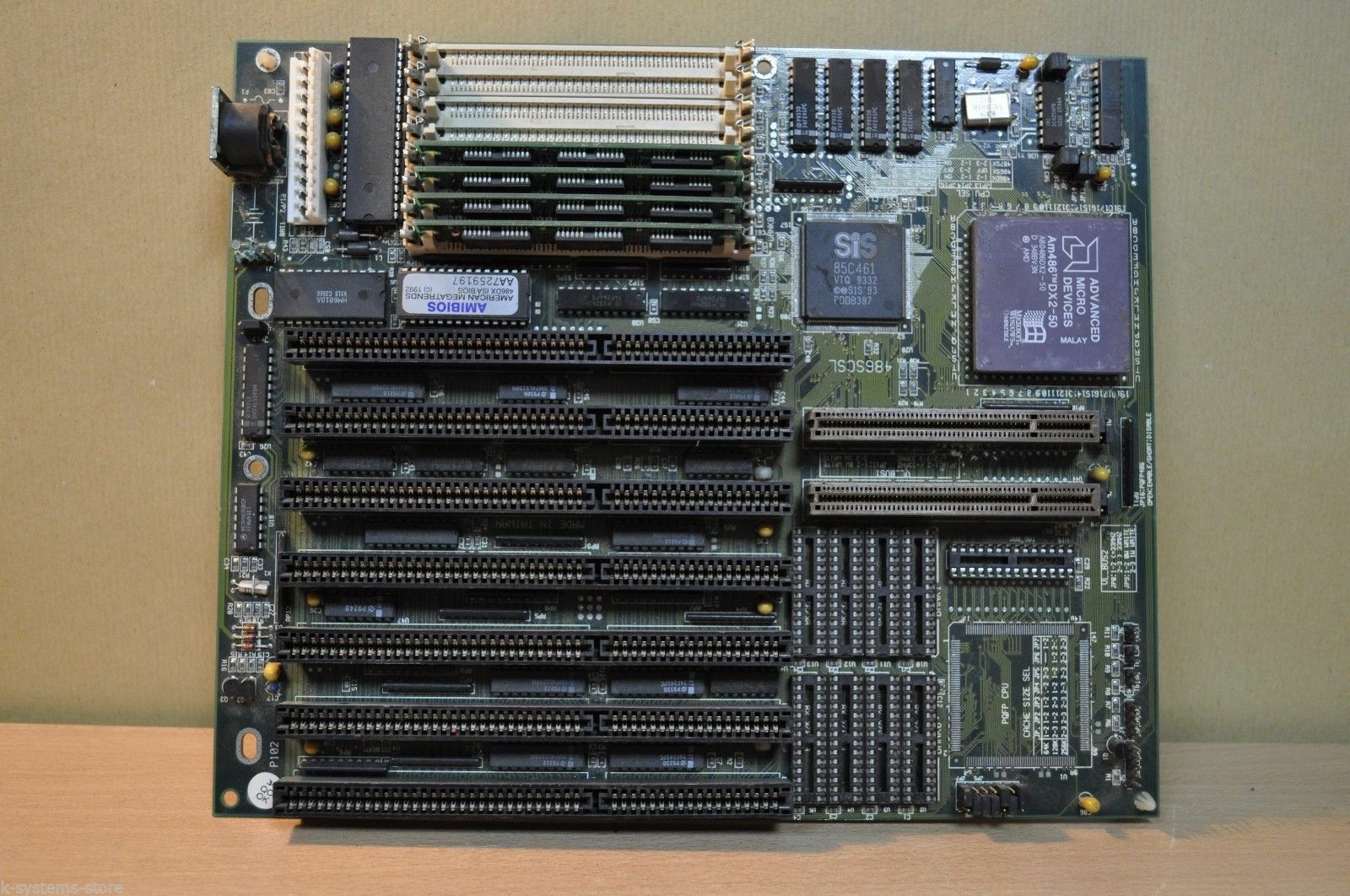
Year: 1993
Type: Socket 3
Form Factor: AT
Chipset: SiS 85C461
Slots: 7 x 16-bit ISA (2 x VLB)
Memory: 8 x 30-pin SIMM
BIOS: AMI 486DX BIOS
Supports up to 256 KB of L2 cache.
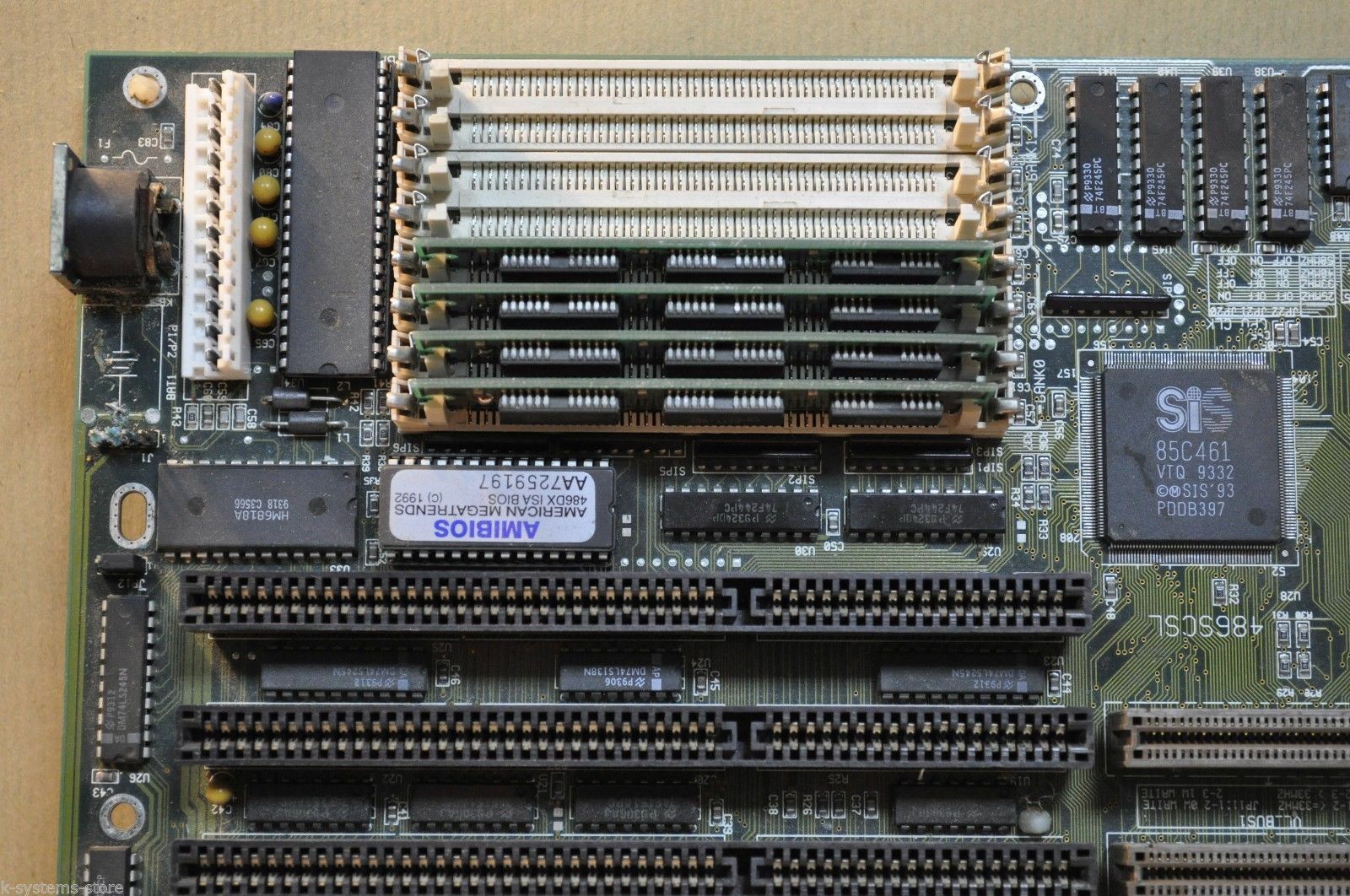 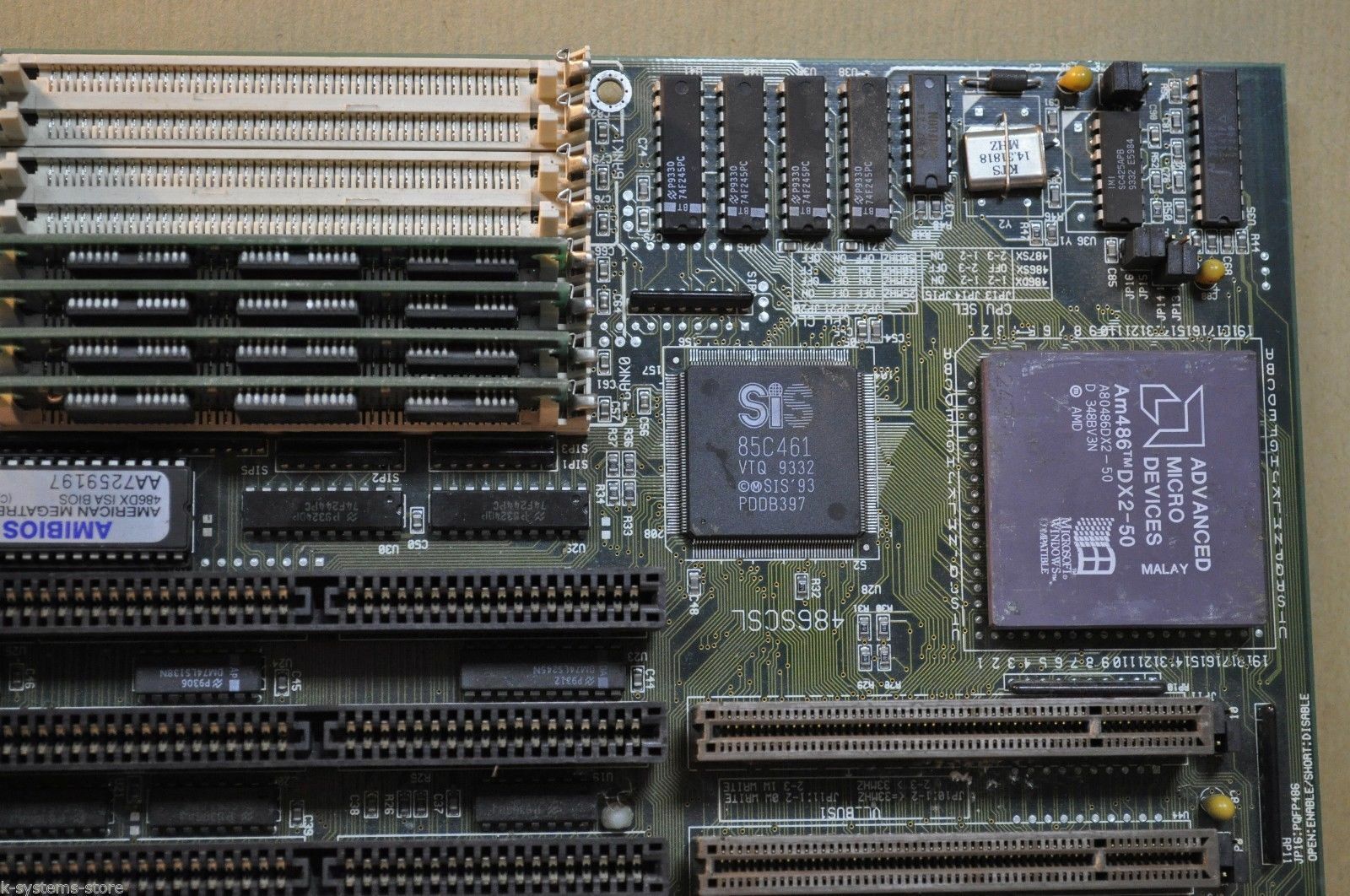 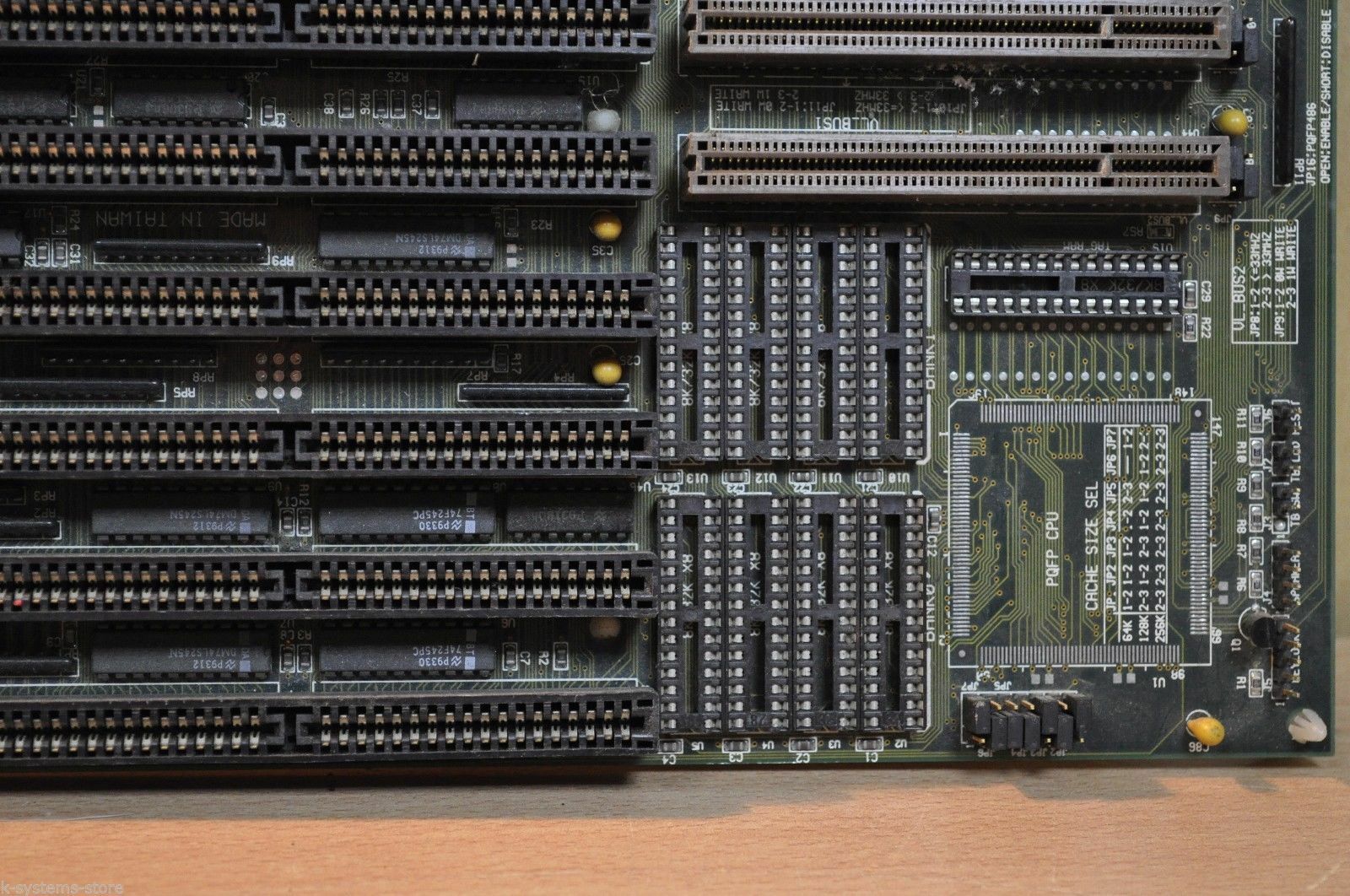 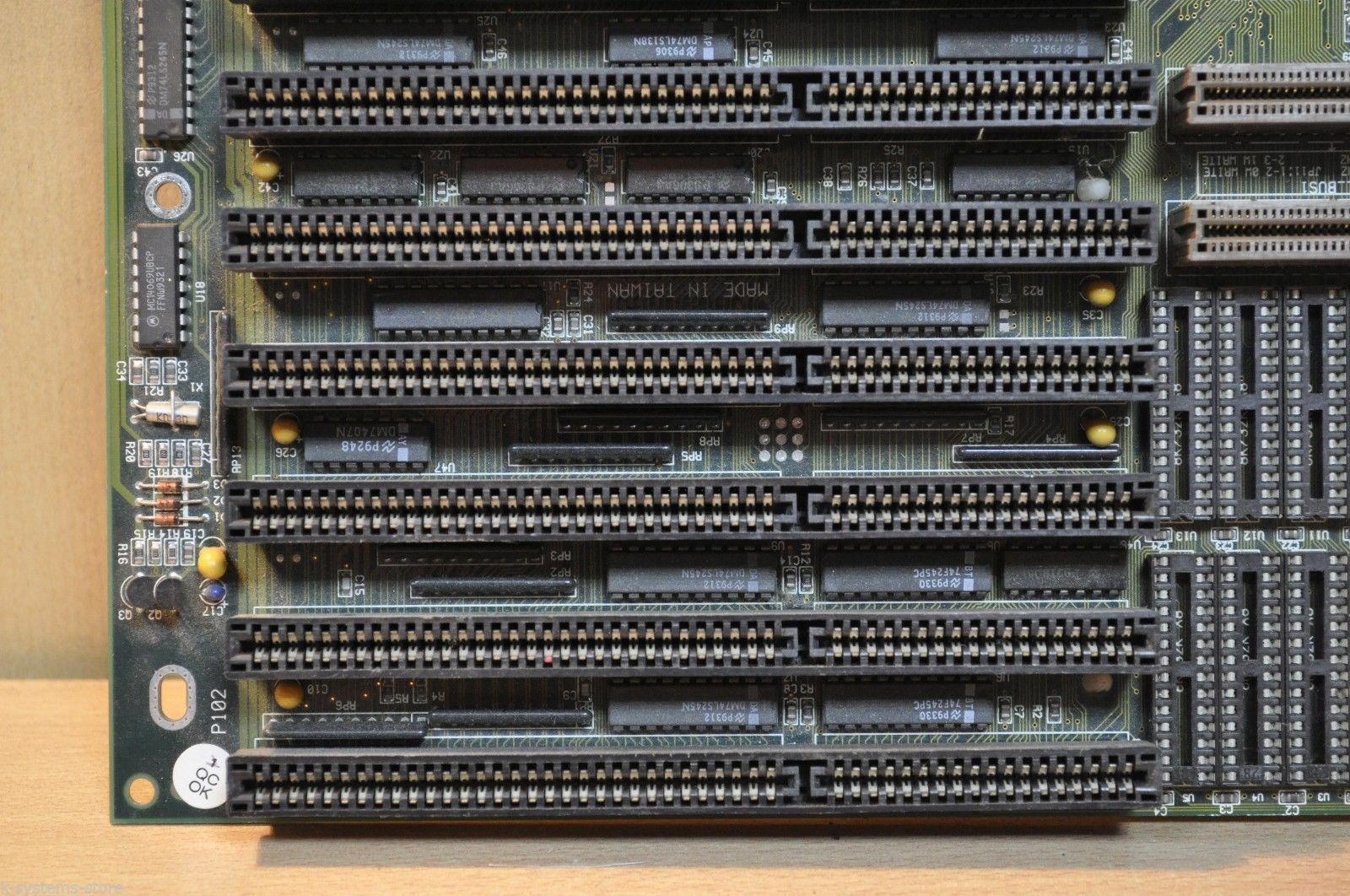
|
486SLB VESA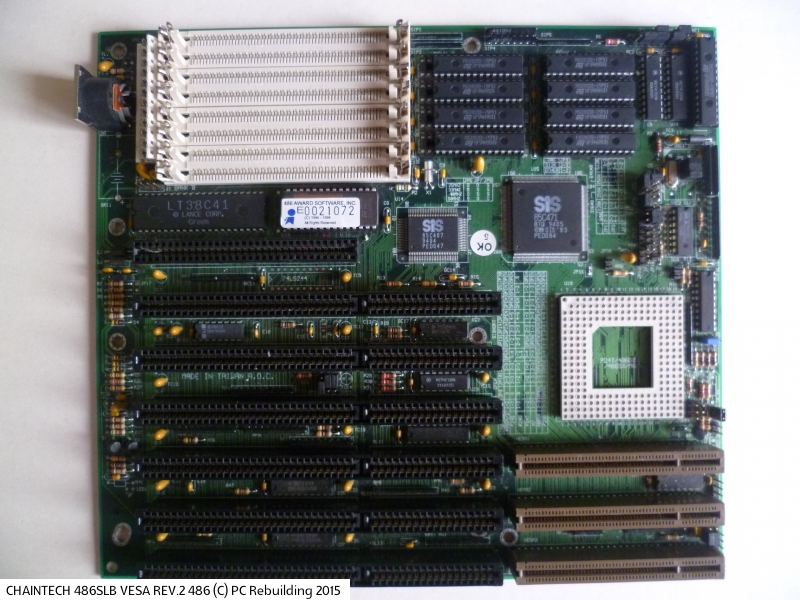
Year: 1994 ?
Type: Socket 3
Form Factor: AT
Chipset: SiS 85C471
Slots: 6 x 16-bit ISA (3 x VLB), 1 x 8-bit ISA
Memory: 8 x 30-pin SIMM
BIOS: Award BIOS 4.50G
Supports up to 486DX2 / Overdrive 5V but does not have the low-voltage: it is possible to install a 3.45V / 3.3V CPU (like the 486DX4- 100) *only* with a voltage adapter or CPU with adapter already incorporated. Supports only 30-pin RAM with parity check and 30-pin without parity check. Comes with 256 KB L2 cache onboard, and supports bus frequencies of 25, 33 or 40 MHz.
|
486SPM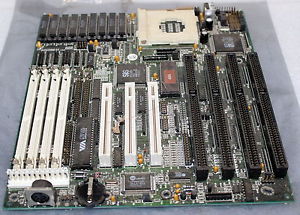
Year: 1994 ?
Type: Socket 3
Form Factor: AT
Chipset: ?
Slots: 4 x 16-bit ISA, 3 x PCI
Memory: 4 x 30-pin SIMM
BIOS: ?
|
5AGM2 and 5AGM3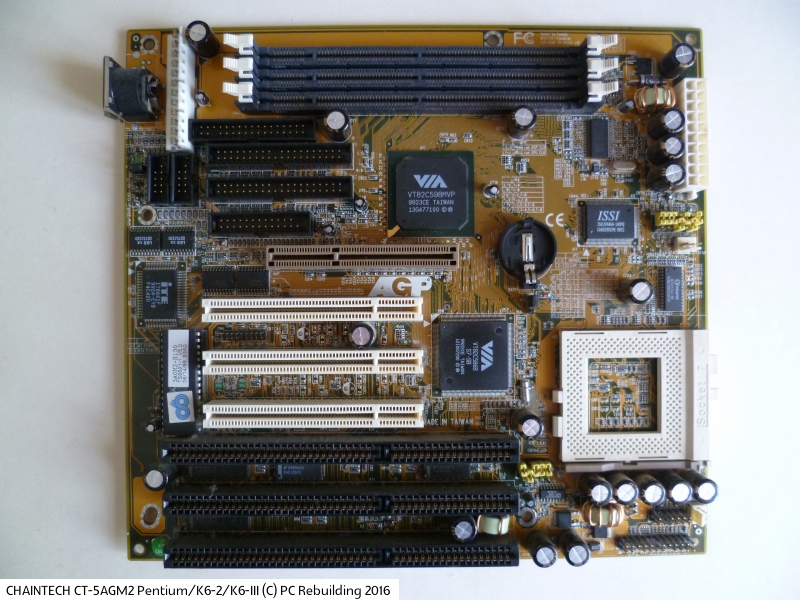
Year: 1999
Type: Super Socket 7
Form Factor: Baby AT
Power Connector: AT
Chipset: VIA Apollo MVP3
Slots: 3 x ISA (16-bit), 3 x PCI, 1 x AGP v1.0.
Memory: 3 x 168-pin DIMM, 384 MB max.
BIOS: Award 4.51PG
CPU Support for Intel Pentium (up to 200 MHz) and Pentium MMX (up to 233 MHz), P54CTB Overdrive processors, Cyrix/IBM 6x86 PR166-PR200 and Cyrix 6x86MX/MII PR166-PR300. Also supports AMD K6 and K6-2 processors (166-300 MHz) and IDT WinChip C6 (180-225 MHz).
*5AGM3 adds support for AMD K6-2+ and K6-3+ up to 533 MHz.
CPU Multipliers from 1.5x up to 5.5x.
Bus speed from 60 - 100 MHz.
512 KB Level 2 cache onboard.
User Manual (5AGM2)
User Manual (5AGM3)
Jumper Settings
|
5HTM0
Year: 1996
Type: Socket 7
Form Factor:
Power Connector: ATX
Chipset: Intel 430HX Triton II
Slots: 4 x ISA (16-bit), 4 x PCI.
Memory: 4 x 72-pin SIMM (2 banks), 256 MB max.
BIOS: Award 4.51PG
User Manual
Jumper Settings
|
5IDM
Year: 1995
Type: Socket 7
Form Factor:
Power Connector:
Chipset: Intel 430FX Triton I
Slots:
Memory:
BIOS: Award 4.50PG
|
5IEM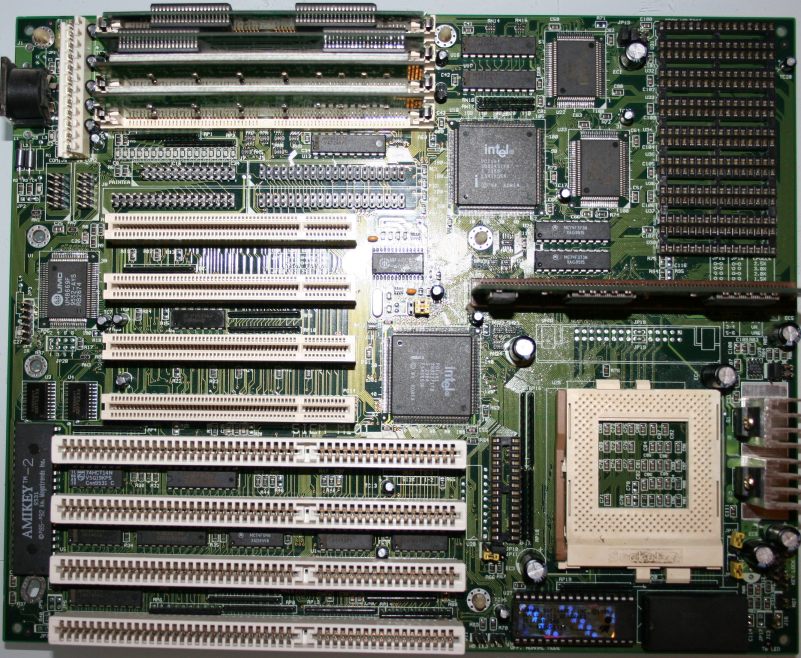
Year: 1996
Type: Socket 7
Form Factor:
Power Connector: AT
Chipset: ?
Slots: 4 x 16-bit ISA, 4 x PCI
Memory:
BIOS: Award
BIOS Dates: 02/01/96
|
5IFM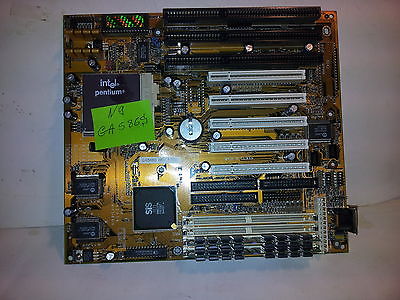
Year: 199?
Type: Socket 7
Form Factor:
Power Connector: AT
Chipset: Intel 430VX
Slots: 3 x 16-bit ISA, 5 x PCI
Memory: 4 x 72-pin SIMM (FPM or EDO)
BIOS: ?
CPU Support: Pentium P54C/P54CS, Cyrix 6x86.
256 KB L2 cache.
|
5RTA2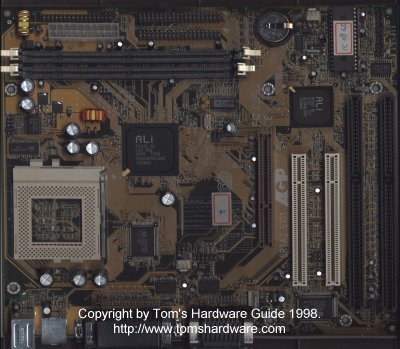
Year: 1998
Type: Socket 7
Form Factor: ?
Power Connector: ATX
Chipset: ALi Aladdin V
Slots: 2 x 16-bit ISA, 2 x PCI, 1 x AGP
Memory: 2 x 168-pin DIMM
512 KB L2 cache, ESS 16 bit soundsystem with gameport on board.
CPU Voltages: 3.5 to 2.0V and 1.95 to 1.70V.
This micro ATX board seems to be designed for cheap game and multimedia computers. 2 PCI and 2 ISA slots are minimum and a 16 bit sound chip (ESS) has already been integrated, so you won't need another PCI or ISA slot for a that at least. The DIMM sockets are of excellent quality here, the swivels really help to lock the memory into the socket. By the way, the jumper setting descriptions on the board are 'not entirely accurate', so they should be reviewed.
Since there is no BIOS update available on the Chaintech website so far (July 12) I didn't get the chance to see if newer versions would recognize the 0.25 µm Cyrix CPU as 'MII' or improve performance. This early revision lead to complete hang ups if the sound system was recognized by Windows 95 and you wouldn't have installed the drivers instantly.
The only memory that worked properly at 100 MHz bus speed was the PC-100 DIMM. All other memories dropped off at this clock speed. I suppose the price for this little board will be quite interesting; if you take this into account the final board can be carefully recommended except for the new MII CPU so far; I hope that performance will also be better with the final version.
|
5TDM2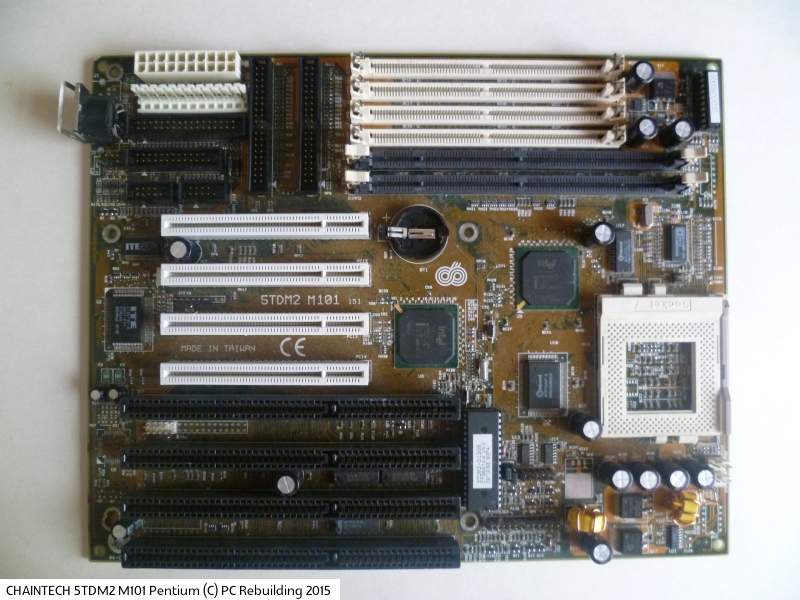
Year: 1997
Type: Socket 7
Form Factor: AT
Power Connector: AT and ATX
Chipset: Intel 430TX
Slots: 4 x 16-bit ISA, 4 x PCI
Memory: 4 x SIMM (2 banks), 2 x DIMM
BIOS: Award (unknown version developed by ChainTech)
The overall performance is good, nothing to complain about. It's the first board with only one cache memory chip of 512 kB. Chaintech has also inplemented switching regulators and an ATX power supply connector in case you want to use this AT board in a common ATX case (PC97). Chaintech now uses a BIOS extension called SeePU where you can adjust CPU speed and voltage in your system BIOS. Chaintech has also added a utility disk (besides the Busmaster IDE drivers) to update the system's INF files allowing Windows 95 to name the PIIX4 PCI-to-ISA bridge as well as the 430TX/440LX correctly. Very fine!
The board comes with 512 KB L2 cache onboard, supported external bus frequencies of 50, 60, 66, 75 and 83 MHz. CPU core voltages supported are 3.2V, 2.9V, 2.8V and more depending on BIOS revision.
Supports 75-233 MHz CPUs, with clock multipliers from 1.5x to 3.5x
CPU Support: Cyrix 6x86, AMD K5, AMD K6, Intel Pentium, Intel Pentium MMX - configured via the BIOS; board is jumperless.
User Manual
Jumper Settings
|
5VGM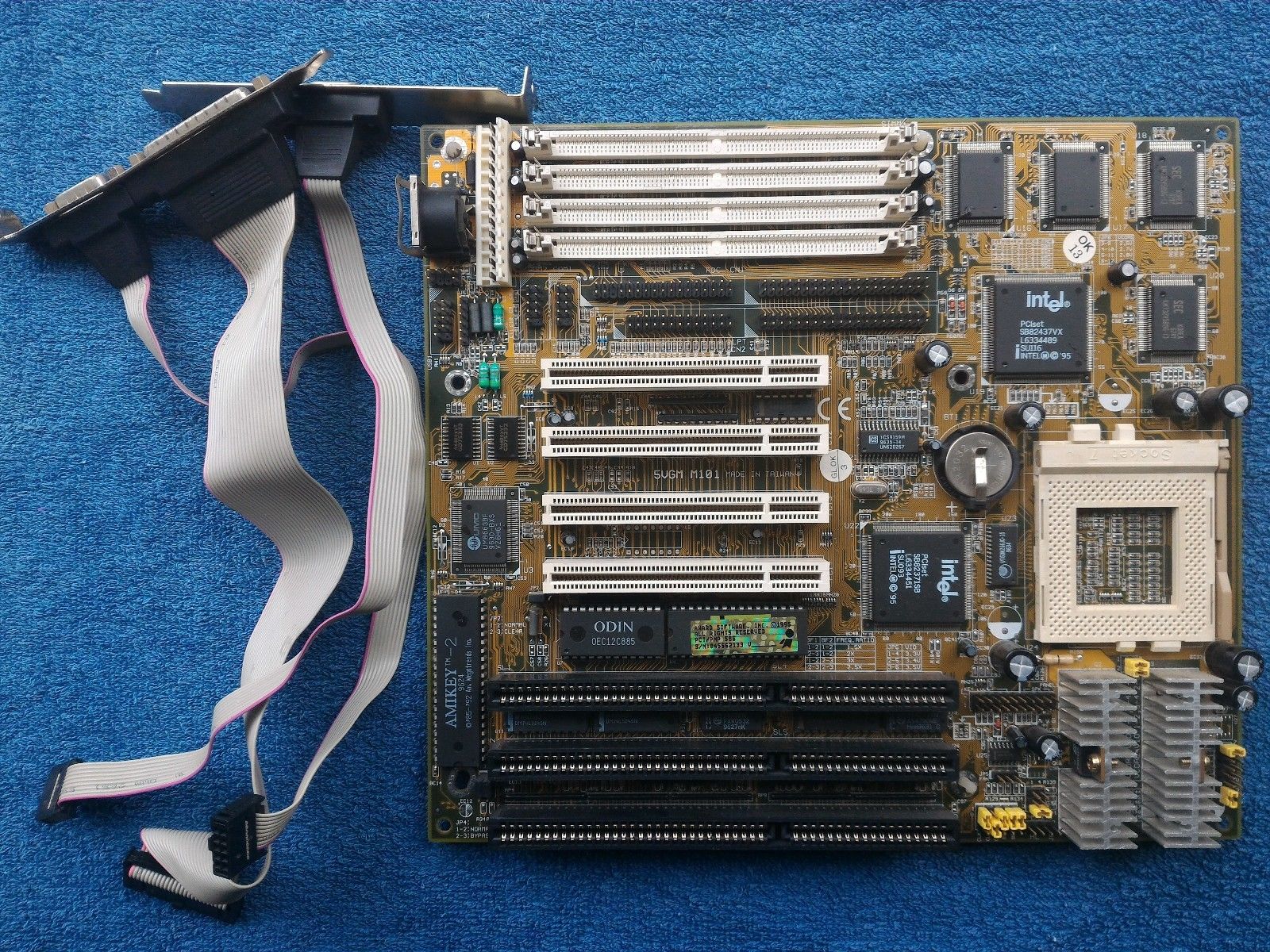
Year: 1996
Type: Socket 7
Form Factor: AT
Power Connector: AT
Chipset: Intel 430VX
Slots: 3 x 16-bit ISA, 4 x PCI
Memory: 4 x SIMM (2 banks)
BIOS: Award v4.51PG
|
6BTM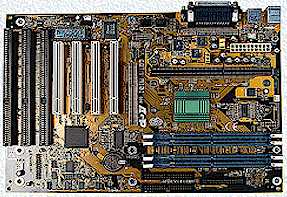
Year: Spring 1998
Type: Slot 1
Form Factor: ATX
Chipset: Intel 440BX
Power Connector: ATX
Slots: 3 x 16-bit ISA, 4 x PCI, AGP
Memory: 4 x DIMM (168-pin)
BIOS: Award v4.51PG
The DIMM slots accept just about all PC-66 and PC-100 SDRAM modules. BIOS supports FSB speeds from 66 MHz up to 133 MHz, regardless of CPU.
Average middle of the road performance for a 1998 Slot 1 motherboard based on the 440BX chipset.
|
6ESA M101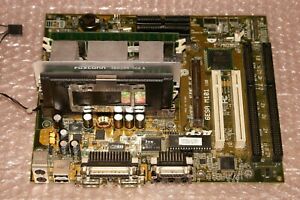
Year: ?
Type: Slot 1
Form Factor: ATX
Chipset: Intel 440EX
Power Connector: ATX
Slots: 2 x 16-bit ISA, 2 x PCI, AGP
Memory: 2 x DIMM (168-pin) PC100 SDRAM.
BIOS: Award PnP SeePU Jumperless config.
This board supports Pentium II and Celeron Slot 1 CPUs with clock multipliers ranging from 2.0x up to 5.0x in 0.5x increments.
The FSB can be set to run from 60 MHz up to 83 MHz.
A cheaper board with less expansion capability than the 6BTM and 6LTM. |
6LTM M101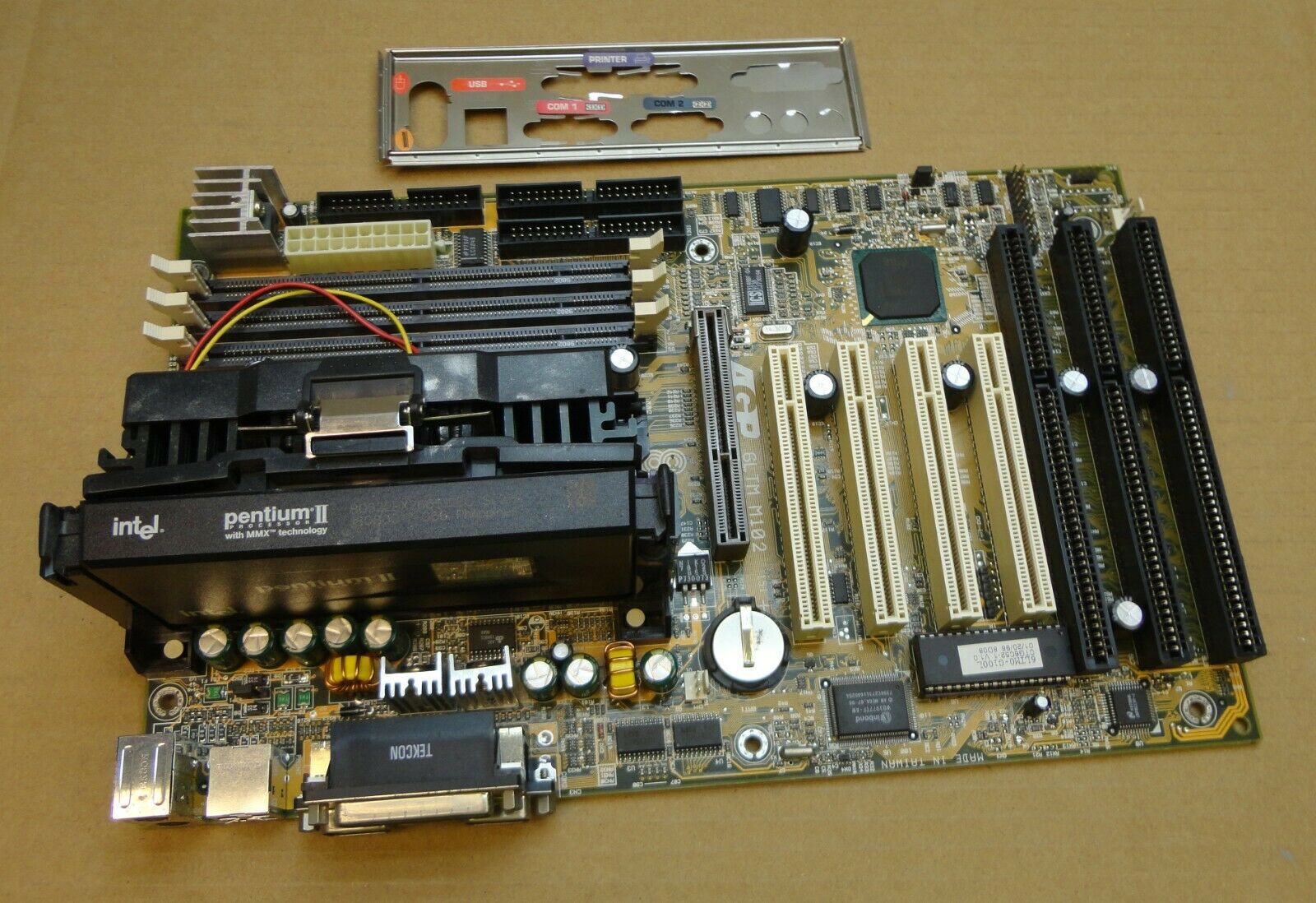 /102 /102
Year: Spring 1998
Type: Slot 1
Form Factor: ATX
Chipset: Intel 440LX
Power Connector: ATX
Slots: 3 x 16-bit ISA, 4 x PCI, AGP
Memory: 3 x DIMM (168-pin)
BIOS: Award PnP with SeePU Jumperless
This board supports Pentium II CPUs with clock multipliers ranging from 3.5x up to 5.5x in 0.5x increments, meaning support for Pentium IIs clocked at 233, 266, 300 and 333 MHz.
The FSB can be set to run from 60 MHz up to 83 MHz.
A decent performing board that is known for its stability.
There is also 6LTM2 which I believe adds support for Intel Celeron processors. It only has 2 ISA slots instead of 3.
|
 Chaintech
Chaintech















